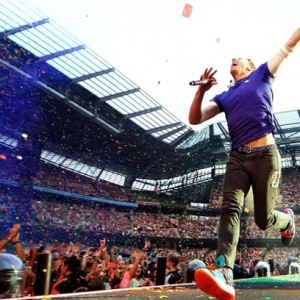Home Life at Paisley Park: How Prince Designed His Creative Sanctuary
When you think of Paisley Park, the first image that often comes to mind is Prince's dazzling stage presence or the eclectic wardrobe that defined his groundbreaking persona. But behind the glitz and glam, there lies a deeply personal, creatively charged sanctuary: Prince's home, studio, and a vibrant hub of artistry in Chanhassen, Minnesota. In this exclusive exploration, we dive into how Prince tailored his sanctuary to nurture creativity, community, and unforgettable musical moments.
The Melding of Home and Studio
Built in 1985, Paisley Park is not just a recording studio; it's a tribute to Prince’s unique vision. Sprawling over 65,000 square feet, this mega-complex comprises multiple studios, rehearsal spaces, and even a spacious soundstage. Prince designed every corner with intention: from the warm wood accents to the striking purple tones that permeate the environment. The aura suggests an inviting yet enigmatic atmosphere, perfectly echoing Prince's artistic spirit.
Prince once described Paisley Park as an “oasis” where he could create without interruption. Every inch of the space, from the walls lined with his beloved vinyl records to the plush lounges designed for visits with fellow artists, speaks to a level of comfort and ease necessary for artistic expression. This interweaving of home life and professional space illustrates Prince’s desire to create an environment where creativity could flourish.
The Heartbeat of Creativity
At the core of Paisley Park’s design is the array of state-of-the-art recording studios, allowing Prince to capture his innovative sound seamlessly. Many music legends, including Sheila E. and The Revolution, frequented these rooms, adding their signature styles to Prince’s sonic tapestry. It was here that timeless classics like “Diamonds and Pearls” came to life, blending artistry in a uniquely collaborative way.
The ambiance of the studios themselves deserves a mention; each room is fitted with custom acoustics and designed for optimal sound. The sheer energy and inspiration that surged through these spaces can be felt, ensuring every note recorded vibrates with the essence of Prince's genius. This holistic integration of personal passion and professional workspaces is a critical component in understanding how he cultivated such a prolific career.
An Experimental Playground
Perhaps what makes Paisley Park truly special is its role as an experimental playground. Prince believed in the idea of ongoing reinvention and exploration – and he built this into the very structure of his sanctuary. The space is adorned with whimsical artwork, wild colors, and hidden corners that spark creativity at every turn. Here, Prince never shied away from pushing boundaries, whether it was in his music, his performances, or the very environment in which he worked.
Regularly hosting jam sessions and collaborative workshops, Paisley Park became a communal gathering spot for both established and emerging artists. Through events like “The Prince Piano & a Microphone” series and private concerts, Prince welcomed fans and fellow musicians alike, nurturing a vibrant culture of creativity and engagement in a way that has turned the estate into an iconic pilgrimage site for music lovers.
A Link to the Past and Future
The legacy of Paisley Park continues to resonate in the music and arts community, especially following Prince’s untimely passing in 2016. His estate has begun opening the complex to fans and visitors, allowing them to experience the magic firsthand. Guided tours offer glimpses into the rooms where creativity took flight and unveil artifacts that showcase Prince’s artistic journey.
By preserving this iconic space, the estate not only keeps Prince’s memory alive but also ensures that future generations can draw inspiration from the mesmerizing environment he crafted at Paisley Park.
Community and Connection
What makes Paisley Park truly a creative sanctuary is its commitment to fostering a spirit of inclusivity and connection among artists and fans. Prince had an innate ability to connect with people deeply, and his home reflected this ethos. Community events and outreach programs often took place here, allowing artists to gather, collaborate, and inspire one another.
By creating this sense of belonging, Prince transformed Paisley Park from simply a home and workspace into a vibrant ecosystem for artists. The communal vibe that permeates this space reminds us of his unwavering dedication to uplifting those around him.
Conclusion
In the grand tapestry of his legendary life, Prince's home at Paisley Park stands as a unique sanctuary for creativity, collaboration, and community. By immersing himself in artistry among friends and collaborators, he forged an environment where innovation and inspiration could thrive. Today, Paisley Park remains a beacon for fans and artists alike, living on as a testament to the magic that occurs when home blends seamlessly with the world of creative innovation. Whether through music, community gatherings, or guided tours, Paisley Park continues to embrace the transformational power of art, just as Prince intended.
As we reflect on his legacy, it's clear that Paisley Park is not just a home—it's a creative sanctuary that shaped the course of music history and continues to inspire the world.

